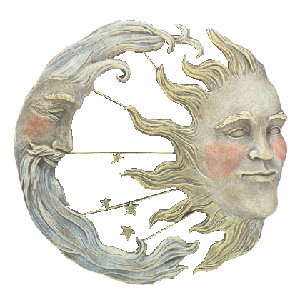Vernal Equinox 2011
Sunday, March 20, marked the vernal equinox: the traditional start of official day of spring and the end of winter.
The Sun yesterday was directly over the equator on the Tropic of Cancer. The Sun crossed into the Northern Hemisphere and will shine there for the majority of the time for the majority of time in the coming next six months.
But, the vernal equinox does not mean that the length of day exactly becomes equal to the length of night.
According to Geoff Chester of the US Naval Observatory (Washington) the equality in the lengths of day and night always emerges before the vernal equinox and after the autumnal equinox.
Speaking on the topic, Chester said: “Exactly when it happens depends on where you are located on the surface of the Earth.”
The next equinox, the Spring Equinox, will occur in six months time.
The vernal and spring equinoxes are the only days of the year when an individual standing on the Equator can see the sun passing directly over his\her head.
Nashville, Tenn. The cold, snowy winter 2010-2011 is fading into history with Sunday evening’s vernal equinox beginning astrological spring.
The winter wasn’t a record-setter, but then there’s more than a century of weather statistics and that’s hard to dent.
Tennessee’s five largest cities all had a colder than normal winter, and there were several snowfalls to foul traffic. Keep kids out of school and provide the fixings for making snowmen.
The forecast for the start of the first week of spring is warm and inviting.
The 90-day outlook for spring calls for near normal temperatures and precipitation.
Write off the winter of 2010-2011 as cold, snowy and so over with.
Sunday’s vernal equinox marked the beginning of astrological spring for the northern hemisphere.
Winter had its moments, but as the season gave way to buttercups and blooming forsythia, it fades into a statistical abstract that didn’t set records, but made itself felt in slippery driving, lost school days and several opportunities to build snowmen.
The National Weather Service has already quantified winter because it keeps records on the meteorological seasons, meaning winter ended February 28 for forecasters.
“We did have a colder, drier and snowier winter than normal in Nashville” – said Bobby Boyd, an NWS meteorologist. “In fact, it was colder than normal by 2 degrees.”
Geometry, Atmosphere, Language of the Vernal Equinox.
If the sun were just a tiny point of light and Earth had no atmosphere, then day and night would each be exactly 12 hours long on a spring equinox day.
But to begin with, as seen from Earth, the sun is nearly as large as a little fingertip held at arm’s length, or half a degree wide.
Sunrise is defined as the moment the top edge of the sun appears to peek over the horizon. Sunset is when the very last bit of the sun appears to dip below the horizon.
The vernal equinox, however, occurs when the center of the sun crosses the Equator.
Plus – Earth’s atmosphere bends the sunlight when it’s close to the horizon, so the golden orb appears a little higher in the sky than it really is.
As a result – the sun appears to be above the horizon a few minutes earlier than it really is.
Therefore, on the vernal equinox day, the daylight hours are actually longer than the length of time between when the sun crosses the horizon at dawn and when the sun crosses the horizon at sunset.
“Those factors all combine to make the day of the equinox not the day when we have 12 hours of light and darkness” – Chester said.
Vernal Equinox Special Nonetheless.
The length of day and night may not be equal on the vernal equinox, but that doesn’t make the first day of spring any less special.
The fall and spring equinoxes (for starters) are the only two times during the year when the sun rises due east and sets due west, according to Alan MacRobert, a senior editor with Sky & Telescope magazine.
The equinoxes are also the only days of the year when a person standing on the Equator can see the sun passing directly overhead.
On the Northern Hemisphere’s vernal equinox day, a person at the North Pole would see the sun skimming across the horizon, beginning six months of uninterrupted daylight.
A person at the South Pole would also see the sun skim the horizon, but it would signal the start of six months of darkness.
